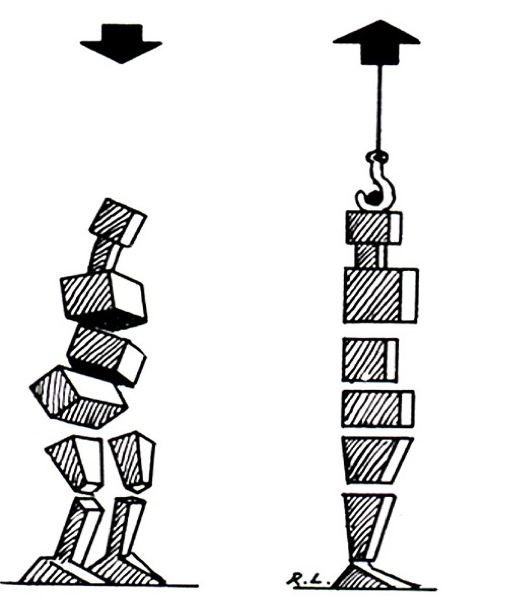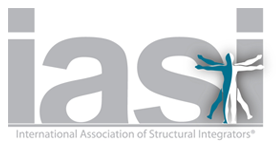 Rolf Structural Integration is a type of myofacial/facial massage that reorganizes and separates connective tissue.
Rolf Structural Integration is a type of myofacial/facial massage that reorganizes and separates connective tissue.
Connective tissue does what it says — it connects every part in the body to all the other parts. It connects bones to bones, muscles to bones, muscles to muscles. You’ve probably heard it referred to by other names — cartilage, ligaments and tendons. Connective tissue gives the human body its form.
Think of it as a long, thin, strong rope that stretches from the tip of your head to the bottom of your toes.
When you trim a raw steak and find that whitish sheet of stretchy thin tissue between natural sections of meat, that’s connective tissue.
Inside your body, connective tissue is critical! This incredibly flexible stuff holds everything in place — tiny cells, small muscles, little bones, big muscles, entire organs. It gives shape to the human body. It gives the body form and space in which internal body parts can function normally. It holds everything very gently. It wraps without squeezing. Bones and skeleton determine a person’s height. Muscles give a person strength and bulk. Connective tissue creates the body’s space.
Rolf Structural Integration: A method of reorganization and alignment with gravity by movement and shifting of connective tissue, more specifically the fascia. Fascia runs all through the body like a spider web, it surrounds the muscle tissue and helps the body keep its shape. Fascia as it becomes more warmed up becomes more flexible, this is why its important to stretch and exercise. Unfortunately when this tissue binds to its self either by injury or poor postural habits, it becomes bound up leading to compensation and pain. Through the work of Structural Integration we will differentiate these areas (separate them) and provide space and then re-integrate the body so you can start operating normally again. This style of work is usually done in a 10 series.
Why do people go through the Structural Integration ten series?
Better posture: When we want to make a good impression entering a gathering, we tell ourselves to stand up straight, hold our head erect and move as gracefully as possible. However, as soon as our minds wander from concentrating on good posture, we find ourselves falling back into our habitual posture. What really has happened here is that our bodies have assumed the posture that our underlying structures actually support. Structural Integrators make a distinction between posture and structure. One of our goals is to organize your underlying structure so that it will support good posture naturally and easily.
Help with chronic pain: People come in with specific areas of chronic pain, lower backs, necks and shoulders, sore hips, legs and feet, TMJ, carpal tunnel syndrome, and others. In all of these conditions. Typically, a Structural Integrators will address the specific structures involved, but will also look at how those local structures affect, and are affected by, the overall body structure.
Support in the healing of injuries: Throughout our lives we experience injuries of all types, participating in sports, car accidents and occupational accidents to name a few. Even surgical interventions leave scar tissue that can contribute to the misalignment of our bodies. In addition to affecting the tissue in the area of the injury, we compensate for the injury by using our body in a way to protect the injured site. In doing so, we create other imbalances that need to be released.
Enhanced athletic performance: Many professional athletes. Olympians, serious and not so serious athletes have gone through the 10 series. Professional musicians also benefit greatly from Rolfing. Research has shown that bodies with integrated muscles fire more completely and rest more completely. There is a less “noise” in the system. This usually has a very positive effect on performance.
Overall well-being: A very broad term and category, but a reason many people seek out Rolfing. Early on, Ida Rolf observed that her clients that came to her for specific problems or aches and pains, reported much more general benefits than they had suspected. Increased energy, a greater ability to relax, better sleep, feeling more at ease in their body…all benefits of a body (and person) functioning with less effort and more efficiency and ease. Most Structural Integrators see clients who have been referred by a psychotherapist, or who are interested in a greater degree of health and well-being.
What is the Ten Series?
The ten series consists of ten consecutive structural integration sessions, generally done weekly to maximize the
cumulative effect of the sessions. They can be set further apart if necessary. These ten sessions follow a systematic progression, organizing the body from the external connective tissue to the internal core connective tissue.
SESSION 1: Opening the breath and hips
SESSION 2: Feet and lower leg orientation
SESSION 3: Shoulder girdle and sides
CORE WORK
SESSION 4: Upper leg and thigh organization
SESSION 5: Organizing anterior lumbar
(abdomen)
SESSION 6: Posterior Pelvis deep rotators
SESSION 7: Organize the neck, jaw, and upper
torso
INTEGRATION
SESSION 8: Integrating body upper or lower with
gravity depending on the clients
needs.
SESSION 9: Integrating body upper or lower with
gravity depending on which was
done in session 8.
SESSION 10: Integrating both upper and lower
body to operate in gravity as a unit.

